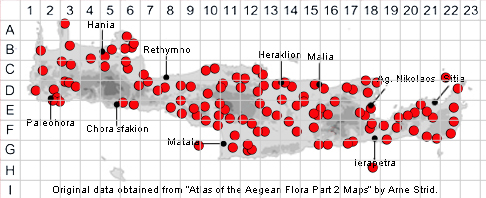
SPECIES DESCRIPTION
CREPIS COMMUTATA
Family:- COMPOSITAE/Sect. BARKHOUSIA
Common Names:- None
Synonyms:- Crepis foetida subsp. commutata, Rodigia commutata,
Seriola commutata.
Meaning:- Crepis (Gr) A name used by Greek philosopher Theophrastus.
Commutata (L) Changed, altered.
General description:- Low to medium, hairy annual.
Stems:-
1) 10-50 cm, branched from the base or middle.
Leaves:-
1) More or less hispid.
2) Basal, up to 13 x 3 cm, oblanceolate, denticulate to 2-pinnate.
3) Cauline, elliptical, ovate, lanceolate or linear, runcinate to deeply pinnatifid,
sessile, auriculate.
Flowers:-
1) Capitula, 1 to many.
2) Involucre, 7-16 x 4-13 mm.
3) Outer involucral bracts, linear-lanceolate, c.½ as long as the inner, with glandular
and eglandular hairs.
4) Receptacle, with 2 scales subtending each achene.
5) Ligules, yellow, reddish-purple on the outer face.
Fruit:-
1) Achenes fusiform, of 2 kinds: marginal achenes 5-9·5 mm, the inner 10-14 mm.
2) Pappus 3-4 mm.
Key features:-
1) Ligules yellow, often with a red stripe on the outer face.
2) Receptacle with 2 scales subtending each achene.
3) Outer involucral bracts linear-lanceolate, c. ½ as long as the inner, with glandular
and eglandular hairs.
4) Involucre 7-16 mm; outer bracts lanceolate to linear-lanceolate.
5) Marginal achenes 5-9·5 mm, the inner 10-14 mm.
6) Pappus 3-4 mm.
Habitat:- Dry pastures, dry open shrubby vegetation, scrub. 0-2000 m.
Distribution:- Throughout Greece and widespread and across the Mediterranean.
Widespread and common on Crete.
Flowering time:- Apr-July.
Photos by:- Sarah Sells
